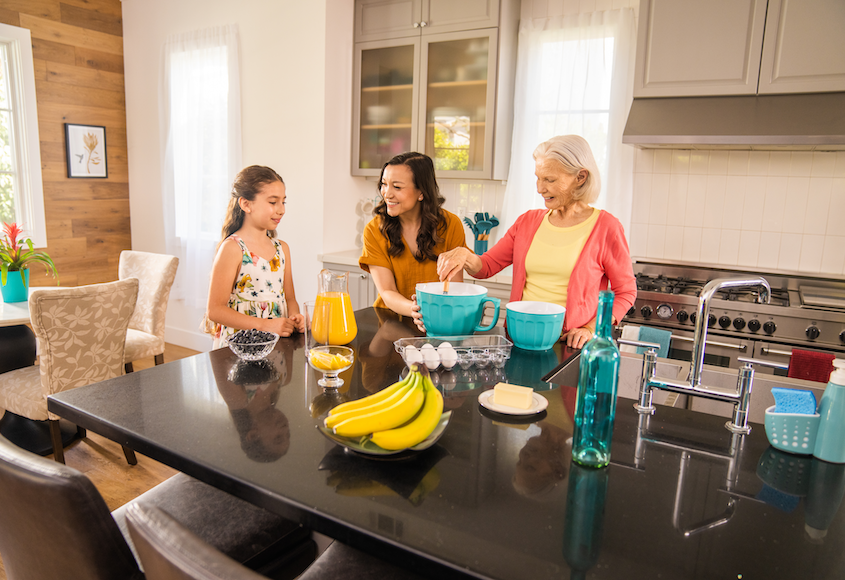Why We Prefer to Age in Place and How Support Can Make It Possible
May is National Older Americans Month, a time to celebrate seniors who have wisdom and experience to share with younger generations. People over age 65 are a growing segment of the population and many are thriving with age.
As of 2019, people over age 65 were 16% of the population in the U.S., according to the United States Department of Health and Human Services’ Administration for Community Living. They also estimate that by 2040, this age group will become 21.4% of the population in this country.
How We Age
Aging can bring many perks and some challenges.
“The Second Half of Life Study” by AARP and National Geographic found that older people tend to be happier than they were when they were younger. This study learned that the primary concerns for older people are brain health, independence, and relationships. Some secondary concerns include “where I will live” and overall health.
Well-being concerns can certainly impact things like independence and even where someone can live. .. Among the challenges of aging, according to the World Health Organization are:
- Falls, which can lead to injury and even death
- Chronic conditions such as diabetes, hearing loss, cataracts, and others
- Progressive illnesses such as dementia, Parkinson’s disease, and more
Depending on which survey you source, anywhere from 77% to 93% of adults age 50 and over express a desire to age in the place they’ve called home for years, rather than relocate to facility-based living such as independent or assisted living communities.
Loneliness can be an issue for some people as they age, particularly after the loss of a spouse or when they move from the comfort of routines, neighbors, and friends. The Institute for Healthcare Policy and Innovation at the University of Michigan conducted the National Poll on Healthy Aging in 2023 surveyed adults ages 50-80 about feelings of loneliness and social interaction. They discovered that one in three of the people in 2023 reported feeling isolated from others.
The Centers for Disease Control and Prevention (CDC) have linked feelings of loneliness and isolation to serious physical illnesses, including heart disease, stroke, type 2 diabetes, and dementia.
Home Care Solutions
In-home care, a service that involves a professionally-trained caregiver coming to someone’s residence to assist with activities of daily living such as safely bathing and dressing, carefully assisting with walking and mobility, and more, can also help with feelings of loneliness. Caregivers are matched with clients based on their skillsets and training, as well as specific interests, backgrounds, and hobbies that might be a good fit.
For some people, a virtual visit using Homewatch Connect™ technology can be a way to reassure loved ones that they are safe without enlisting an in-person visit. This technology is part of Homewatch CareGivers Total Care Solutions™ which is intended to support aging in place in a way that is right for the individual with customized care plans—much like selecting from a menu for weekly meals.
When it comes to enjoying life during every stage and age of life, support from friends and family can make a meaningful difference in physical and emotional well-being, especially when someone is aging in the place where they feel most at home. Sometimes a caregiver can become a new friend, or simply be there when family is not available or need to take care of themselves too.
The theme for Older Americans Month in May 2024 is “powered by connection” and the focus is on the impact that relationships have on health. Home care can be part of the solution to aging in place with good affiliations that have the potential to minimize the challenges of life.



